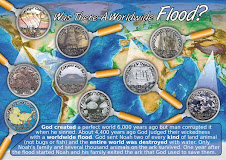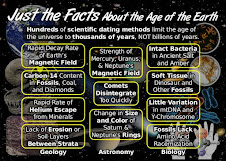https://www.icr.org/article/Radiocarbon-in-yet-another-dinosaur-fossil/
Creation-based thinking made a testable prediction. If Noah’s Flood formed dinosaur and other fossils only 4,500 or so years ago, then they may still contain measurable amounts of the short-lived radioactive isotope carbon-14—also called radiocarbon. On the other hand, any fossil deposited before the limit of carbon-14 longevity (around 100,000 theoretical years ago) would have no carbon-14 left. Now, a team of secular scientists used radiocarbon to argue against the preservation of dinosaur collagen, but unwittingly affirmed the Flood option.
Examples of radiocarbon discoveries that are out-of-place for evolutionary time keep stacking up. Medical doctor Paul Giem accumulated dozens of examples back in 2001.1 His long list of secular publications cited radiocarbon in coal, oil, and marble. It inspired the ICR RATE project to look for radiocarbon in deeply buried coal and in supposedly ancient diamonds. RATE found radiocarbon at levels above the background blanks in all samples.2,3
In our 2015 report of new fossil samples with radiocarbon, coauthor Vance Nelson and I summarized a few dozen already published wood, shell, and bone fossils that bore evolutionary ages far in excess of their radiocarbon levels.4 That list had almost fifty samples. Now, a Chicago Field Museum-led team published one more in the journal eLife.5
It seems as though almost everywhere we look, we find young-looking carbon.
Examples of radiocarbon discoveries that are out-of-place for evolutionary time keep stacking up. Medical doctor Paul Giem accumulated dozens of examples back in 2001.1 His long list of secular publications cited radiocarbon in coal, oil, and marble. It inspired the ICR RATE project to look for radiocarbon in deeply buried coal and in supposedly ancient diamonds. RATE found radiocarbon at levels above the background blanks in all samples.2,3
In our 2015 report of new fossil samples with radiocarbon, coauthor Vance Nelson and I summarized a few dozen already published wood, shell, and bone fossils that bore evolutionary ages far in excess of their radiocarbon levels.4 That list had almost fifty samples. Now, a Chicago Field Museum-led team published one more in the journal eLife.5
It seems as though almost everywhere we look, we find young-looking carbon.







